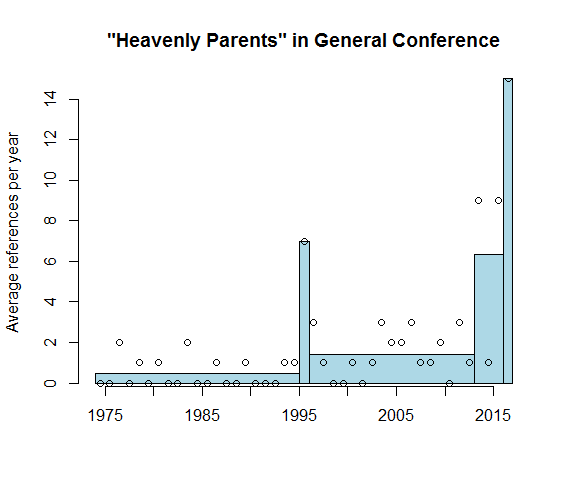Recently, I was listening to an episode of the podcast “At Last She Said It” where the hosts were talking about the New Testament story of the woman with an issue of blood (for 12 years!) who was healed by touching the hem of Jesus’s robe. They made the point that the woman would have been considered ritually unclean because of her issue of blood, so it seems unlikely that she would have been able to meet with Jesus by going through any kind of official channel. So that may be why she just wedged herself through the crowd to get to him rather than trying to meet with his disciples first or something.
(Incidentally, if you enjoy podcasts and Mormon feminism, I think you should give “At Last She Said It” a try. The hosts are really interesting and insightful, and I appreciate hearing their commentary. I often hear them frame things in ways or make points that I hadn’t considered, even on topics I’ve been reading women’s commentary about online for years and years.)
Their point got me to thinking about more of the stories in the New Testament in the framework of gatekeeping or people going to great lengths to get to Jesus. For example, there was Zacchaeus, who was at first deterred by a crowd, but then climbed a tree to get Jesus’s attention, and was able to have him come to his house. The crowd was an incidental rather than an intentional obstacle, although then of course when Jesus said he was going to Zacchaeus’s house, they complained that he was hanging out with a sinning publican. Or there was the man who was let down through a roof into a house to get access to Jesus and was promptly forgiven of his sins and healed. In both of these examples, there wasn’t anyone intentionally gatekeeping access to Jesus. But in the case where people brought their children to Jesus, his disciples turned them away before Jesus famously told them to “Suffer little children . . . to come unto me.” And then there was the time a bunch of people followed Jesus into the desert to hear him preach, and his apostles wanted to send them back to their towns after a while to get food, but Jesus miraculously fed them so they could stay. Or there was the blind man who heard Jesus and his entourage were passing by and cried out for Jesus to heal him, and wasn’t deterred even when others in Jesus’s party shushed him. Jesus healed him.
What these stories have in common is that someone wants to get to Jesus for healing or blessing and someone (or something) is standing in their way, and nevertheless they persist and get to him. The person trying to get to him always appear in a good light, and the people standing in the way don’t come off so well. It’s more often that Jesus implicitly scolds the gatekeepers, like with the clamoring blind man where Jesus ignored his shushing companions and called for the man to be brought to him, but in the story with the children, he actually rebukes the gatekeepers.
I’m sure you can see where I’m going with this. Now we have lots of Church members who want to acknowledge or talk about or pray to Heavenly Mother, and the GAs are acting as gatekeepers. Dale G. Renlund last conference followed in the footsteps of Gordon B. Hinckley a few decades ago, in maybe saying things as softly as he could, but still telling members that they shouldn’t be praying to Heavenly Mother. The GAs are clearly uncomfortable with any groundswell of interest in her.


